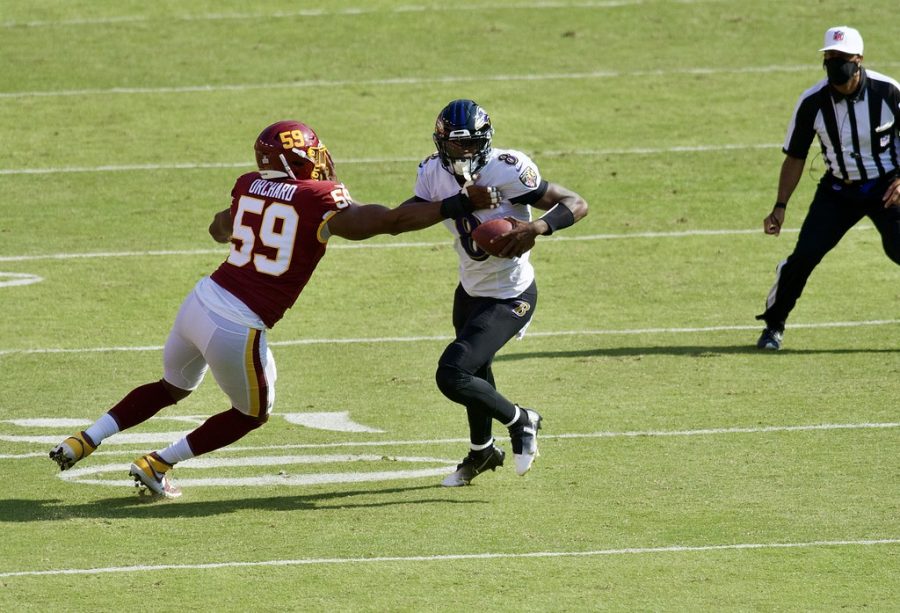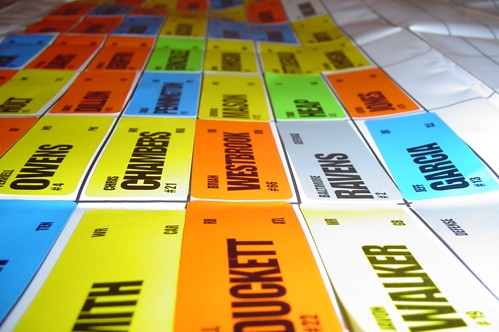
By Maggie Devereux
Editor-In-Chief
Junior Aisha Tepede doesn’t have normal math homework some nights. Instead of doing problems from a book for an hour or two, she logs on to a google site created by her teacher Frank Briody and watches a video lesson also made by him.
This is the first year that Briody has implemented videos into his pre-calculus classes. After hearing about the Khan Academy from another teacher’s blog or twitter, Briody decided to check out the site. Originally, he had planned to use videos off of the Khan Academy, but when the pre-calculus videos didn’t exactly match up with his class and he decided to make his own.
The videos allow students to learn in a different way than a normal class lecture, which Tepede prefers.
“[The videos] are less time and for me it’s easier,” Tepede said. “If I didn’t catch something, I can rewind the video and see what [Mr. Briody] did.”
Watching videos for homework then gives students the opportunity to work on what would be “normal homework” in class.
“For kids who would struggle through homework, at home alone and not know what to do when they got stuck, [now] there’s other students or a teacher to ask,” Briody said. “The goal is that math is a little bit of problem solving, and problem solving in groups is better than just trying to figure it all out on your own.”
After each video, students are required to answer a few questions to prove they watched the video, and they also have to chance to submit questions or feedback. Tepede finds this most beneficial because she can submit a question after the video, and Briody then answers it the next day in class. Briody also sees this as an advantage because he can get feedback on what everyone is struggling with quicker.
The videos aren’t for everyone though. According to Briody, some students reply to every video saying they hate them which is another reason the class isn’t 100 percent video.
Another reason is because Briody has to find the time to create all the videos. While each video only ranges between 5-20 minutes long, they can take at least an hour– if not two– to make.
The videos are primarily pictures of the PowerPoint slides he would use to teach the lesson; however, the video format allows him to write over the slides much like the style seen in the Khan videos.
Since most of the feedback has been positive, Briody envisions continuing to implement videos for a few more years. The most important thing to look at is how they influence test scores. While he acknowledges that the novelty of the videos makes them good for morale, the main importance is what his students get out of them.
“The goal is to get kids to learn,” Briody said. “So if test scores don’t go up, then what’s the point [of the videos]?”
This is the first year that Briody has implemented videos into his pre-calculus classes. After hearing about the Khan Academy from another teacher’s blog or twitter, Briody decided to check out the site. Originally, he had planned to use videos off of the Khan Academy, but when the pre-calculus videos didn’t exactly match up with his class and he decided to make his own.
The videos allow students to learn in a different way than a normal class lecture, which Tepede prefers.
“[The videos] are less time and for me it’s easier,” Tepede said. “If I didn’t catch something, I can rewind the video and see what [Mr. Briody] did.”
Watching videos for homework then gives students the opportunity to work on what would be “normal homework” in class.
“For kids who would struggle through homework, at home alone and not know what to do when they got stuck, [now] there’s other students or a teacher to ask,” Briody said. “The goal is that math is a little bit of problem solving, and problem solving in groups is better than just trying to figure it all out on your own.”
After each video, students are required to answer a few questions to prove they watched the video, and they also have to chance to submit questions or feedback. Tepede finds this most beneficial because she can submit a question after the video, and Briody then answers it the next day in class. Briody also sees this as an advantage because he can get feedback on what everyone is struggling with quicker.
The videos aren’t for everyone though. According to Briody, some students reply to every video saying they hate them which is another reason the class isn’t 100 percent video.
Another reason is because Briody has to find the time to create all the videos. While each video only ranges between 5-20 minutes long, they can take at least an hour– if not two– to make.
The videos are primarily pictures of the PowerPoint slides he would use to teach the lesson; however, the video format allows him to write over the slides much like the style seen in the Khan videos.
Since most of the feedback has been positive, Briody envisions continuing to implement videos for a few more years. The most important thing to look at is how they influence test scores. While he acknowledges that the novelty of the videos makes them good for morale, the main importance is what his students get out of them.
“The goal is to get kids to learn,” Briody said. “So if test scores don’t go up, then what’s the point [of the videos]?”
Here is an example of what Briody’s videos looks like.
History in video: Even though this is the first year Briody has used video with his pre-calculus classes, Briody has used a different type of video in the past.
When he taught a regular statistics class, he needed to teach students how to use a computer program, but there wasn’t class time to teach this. Instead, Briody made videos for the students to watch outside of class to learn the program.
That experience came in handy this year because he already knew how to work the video software when he began to create pre-calculus lessons.









































































